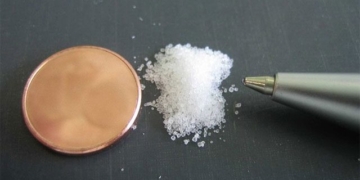Thin individuals can also experience high blood lipids (hyperlipidemia) due to genetics, unhealthy dietary habits, lack of physical activity, or smoking.
Causes of High Blood Lipids in Thin Individuals
High Blood Lipids and Overweight
In addition to factors such as genetics, certain health conditions and medications, being overweight often results from unhealthy eating habits and little or no exercise. Consequently, being overweight increases an individual’s risk of developing various health issues.
One of the most common conditions faced by overweight individuals is high blood lipids. Obesity raises a person’s triglycerides and low-density lipoprotein (LDL) or bad cholesterol levels while their high-density lipoprotein (HDL) or good cholesterol levels may be too low.
High blood lipids pose an increased risk for cardiovascular diseases and strokes. While this is true, not all individuals who weigh more than others have high blood lipids. In some cases, thin individuals may be more likely to have high cholesterol than those who are overweight or obese.
Thin Individuals and Hyperlipidemia
One of the most common misconceptions is that many people believe thin individuals cannot have high blood lipids. As mentioned above, overweight individuals are generally at a higher risk for hyperlipidemia. However, not all of them experience this condition.
The same applies to thin individuals suffering from hyperlipidemia. Having a slim, slender physique does not mean that one is healthier than those who are larger. People of different body types can suffer from hyperlipidemia, especially if they consistently maintain an unhealthy lifestyle.
High cholesterol in thin individuals often goes unnoticed because their bodies do not show signs of consuming excess saturated and trans fats. In most cases, a thin person with high blood lipid levels may only become aware of their condition if they regularly monitor their cholesterol levels.
So, can thin individuals have high blood lipids? The answer is yes. Regardless of their weight, how a person diets and exercises can lead to high blood lipids (high cholesterol).

Thin individuals, not overweight, can still be at risk of hyperlipidemia if they are inactive and have unhealthy eating habits.
What Causes High Blood Lipids in Thin Individuals?
A person with a normal and balanced weight does not necessarily mean they are healthy. Below are factors that may cause thin individuals or those with normal weight to develop high blood lipids.
Genetics
One common reason many people experience high blood lipids is due to genetics. Familial hypercholesterolemia (FH) is a genetic disorder that some people inherit from their parents and close relatives (grandparents), leading to elevated levels of LDL, also known as bad cholesterol.
FH often occurs at birth or in childhood, but some individuals only begin to notice symptoms as they age. If left undiagnosed and untreated, FH can lead to early heart attacks and various cardiovascular diseases.
Unhealthy Diet
Many people can eat whatever they want without gaining weight. However, not everyone can maintain their figure and health by eating anything they desire at any time.
Thin individuals often stay healthy by consuming nutritious foods. However, these healthier choices can sometimes negatively impact a person’s cholesterol levels if not consumed carefully.
Many products on the market are advertised as low in cholesterol, yet it is important to note that some of these products still contain a significant amount of saturated and trans fats. These substances can increase the presence of cholesterol in the bloodstream.
Lack of Physical Activity
An unhealthy lifestyle combined with a lack of physical activity increases the risk of high cholesterol, even for thin individuals. Typically, naturally thin people can maintain their weight regardless of how much they eat because their metabolism runs much faster than that of heavier individuals.
However, even if they burn calories throughout the day without exercising, they still cannot burn off the bad cholesterol their bodies absorb.
Smoking
Many diseases are caused by smoking, and high blood lipids are among them. Smoking raises levels of bad cholesterol (LDL) and triglycerides, causing them to build up in the arteries.
Smoking also lowers levels of good cholesterol (HDL), which primarily functions to absorb cholesterol, carry it back to the liver, and prevent LDL from clogging arteries. Heavy smoking not only increases the risk of high blood lipids but also makes individuals more susceptible to various cardiovascular issues.
How to Prevent High Blood Lipids?
Maintain a Heart-Healthy Diet
Eat foods that can help improve cholesterol levels, such as vegetables, fruits, and whole grains. Additionally, include foods rich in omega-3 fatty acids in your meals, such as salmon, nuts, seeds, and vegetable oils, as this will help improve your HDL and LDL levels.
Limit or Avoid Saturated and Trans Fats
Limit your intake of fried foods, desserts, and processed foods. These can unusually increase cholesterol levels in the body, especially if not consumed carefully.
Exercise Regularly
Avoid prolonged periods of inactivity, as this can lower your HDL or ‘good’ cholesterol levels. It is advisable to move around or exercise regularly to burn calories, helping to manage blood pressure and cholesterol.
Quit Smoking
Quit smoking as soon as possible to protect yourself and others from high cholesterol and cardiovascular issues. Changes in your blood lipid levels will become noticeable within just a few weeks of quitting.
Regularly Check Cholesterol Levels
Occasional blood lipid checks will help you better understand any sudden changes in your cholesterol levels. Additionally, keeping track of health metrics will assist doctors in making accurate diagnoses if you need to seek medical advice.




















































